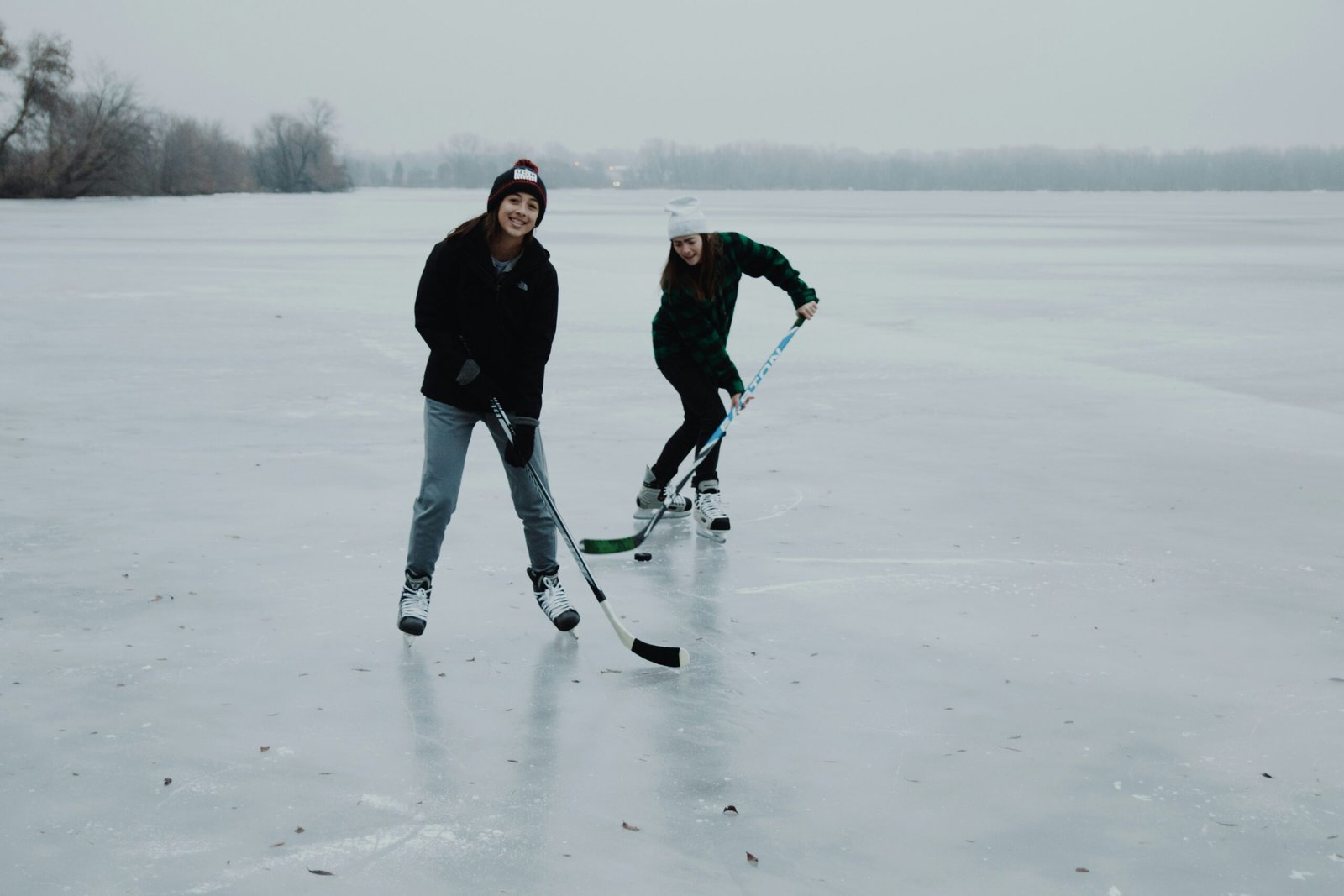Ice skating is more than just a fun winter activity; it’s a way to embrace the chill of the season and glide gracefully across frozen surfaces. Whether you’re twirling around with friends or honing your skills for competitive sports, finding the right type of ice can make all the difference in your experience.
When it comes to choosing between natural ice and artificial rinks, each option has its own unique charm. Natural ice offers an enchanting connection to nature, while artificial rinks provide consistent conditions and accessibility. With so many factors to consider, how do you decide which is best for you? Let’s dive deeper into these two worlds of icy adventure!
The Difference between Natural and Artificial Ice
Natural ice forms when water freezes in lakes, ponds, or rivers during winter. Its surface can vary significantly due to weather conditions and natural occurrences. You might find smooth areas perfect for skating alongside rough patches filled with snow or bumps.
Artificial rinks are created using refrigeration systems that maintain a consistent ice temperature. These rinks provide a controlled environment, ensuring uniformity across the entire surface. This predictability makes them popular for organized events and training sessions.
The texture of natural ice can feel different under your skates compared to artificial options. Each offers a unique experience—one shaped by nature’s whims and the other crafted by technology’s precision. Both have their charm, inviting different types of skaters into their embrace.
Pros and Cons of Skating on Natural Ice
Skating on natural ice offers a unique charm that artificial rinks often can’t match. The experience of gliding across a frozen lake surrounded by nature is truly special. The serene atmosphere makes it an enjoyable escape from the hustle and bustle.
However, natural ice isn’t always reliable. Weather conditions play a significant role in its quality. Thawing temperatures can create unsafe patches or thin spots that may be hard to detect.
Accessibility is another factor to consider. Finding suitable locations for skating might require some travel, and not all areas will have well-maintained paths or surfaces.
On the upside, many people appreciate the connection to nature while enjoying outdoor activities. It’s also free! Just grab your skates and head out—no entrance fees involved here. But remember, preparation is key; you never know what awaits underfoot when venturing onto those beautiful winter lakes.
Pros and Cons of Skating on Artificial Rinks
Artificial rinks provide a consistent ice quality, which is essential for skaters who want to practice specific techniques. The temperature and surface conditions are controlled, ensuring a reliable experience every time you lace up your skates.
On the other hand, the atmosphere can feel less natural compared to outdoor settings. Some find that artificial environments lack the charm and beauty of skating on frozen lakes or ponds surrounded by nature.
Accessibility is another significant advantage. Artificial rinks are often located in urban areas or dedicated facilities, making them easy to reach year-round. This convenience attracts many casual skaters who may not have access to natural ice nearby.
However, costs can be higher at these venues due to admission fees and rental gear options. For budget-conscious enthusiasts, this might limit how often they choose to skate indoors rather than outdoors when conditions permit.
Safety Considerations for Both Options
Safety is paramount when it comes to ice for skating, whether on natural or artificial surfaces. Natural ice can vary greatly in thickness and quality. Always check conditions before stepping onto a frozen lake or pond.
Look for clear, solid areas without cracks or soft spots. Ice should ideally be at least four inches thick for safe skating. If you’re unsure about the safety of a location, it’s best to err on the side of caution.
Artificial rinks are engineered with consistency in mind but aren’t devoid of risks. Be mindful of your surroundings—other skaters can collide with you unexpectedly.
Always wear protective gear like helmets and knee pads, especially if you’re a beginner. Take note of rink rules; they help maintain order and ensure everyone’s safety while enjoying their time on the ice.
Environmental Impact of Natural vs. Artificial Ice
Natural ice skating rinks offer a beautiful connection to the outdoors. They form in ponds and lakes, relying on cold weather conditions. This process is entirely natural and leaves no significant carbon footprint.
On the other hand, artificial rinks require energy for refrigeration systems. These facilities often depend on electricity or fossil fuels, contributing to greenhouse gas emissions. The impact can be substantial when you consider large-scale operations in urban areas.
Yet, many artificial rinks are designed with sustainability in mind. New technologies aim to reduce energy consumption and utilize eco-friendly refrigerants. Some even incorporate solar panels for power generation.
Choosing between these two options can influence local ecosystems as well. Natural sites may disrupt wildlife habitats if not managed carefully, while artificial rinks can lead to increased water usage and waste production during construction and maintenance phases.
Factors to Consider When Choosing Where to Skate
Choosing where to skate involves several key factors. First, consider your skill level. Beginners might feel more comfortable on a controlled artificial rink, while experienced skaters may prefer the unpredictability of natural ice.
Weather conditions play a significant role too. Natural ice requires consistent cold temperatures and can be affected by sunlight and rain. Artificial rinks offer reliable skating regardless of outdoor weather.
Accessibility matters as well. Look for locations that are easy to reach with convenient parking or public transportation options.
Think about the ambiance you desire. Natural settings often provide beautiful backdrops but may lack amenities like restrooms or food concessions that many indoor rinks offer. Each choice presents unique experiences based on what you’re looking for in your skating adventure.
Tips for Beginners on Each Type of Ice
If you’re new to skating on natural ice, start by checking the thickness. Ideally, it should be at least four inches for safety. Wear layered clothing since temperatures can fluctuate.
When stepping onto the ice, take small strides and keep your knees slightly bent. It’s all about balance, so don’t rush into big movements.
For artificial rinks, consider attending a beginner’s lesson. Many rinks offer classes that focus on basic skills like stopping and gliding efficiently.
Always wear protective gear—especially a helmet—to prevent injuries as you learn to navigate the surface.
Practice falling safely by bending your knees and landing on your side rather than straight back. This will help minimize shock when you’re learning how to control your movements.
Skate with friends or family whenever possible; their support can boost confidence while enjoying this wonderful activity together.
Conclusion
Choosing between natural ice and artificial rinks for skating can deeply influence your experience. Each option offers unique advantages and challenges, appealing to different preferences and skill levels.
Natural ice provides a refreshing outdoor adventure that connects you with nature. However, it can vary in quality based on weather conditions, affecting safety and enjoyment. On the other hand, artificial rinks offer consistent surfaces tailored for skating enthusiasts seeking reliability. Yet, they often come with environmental considerations due to energy usage.
The best choice depends on what you’re looking for: an authentic experience or a controlled setting. Embrace whatever suits your style—just remember to stay safe and have fun gliding across the ice!

